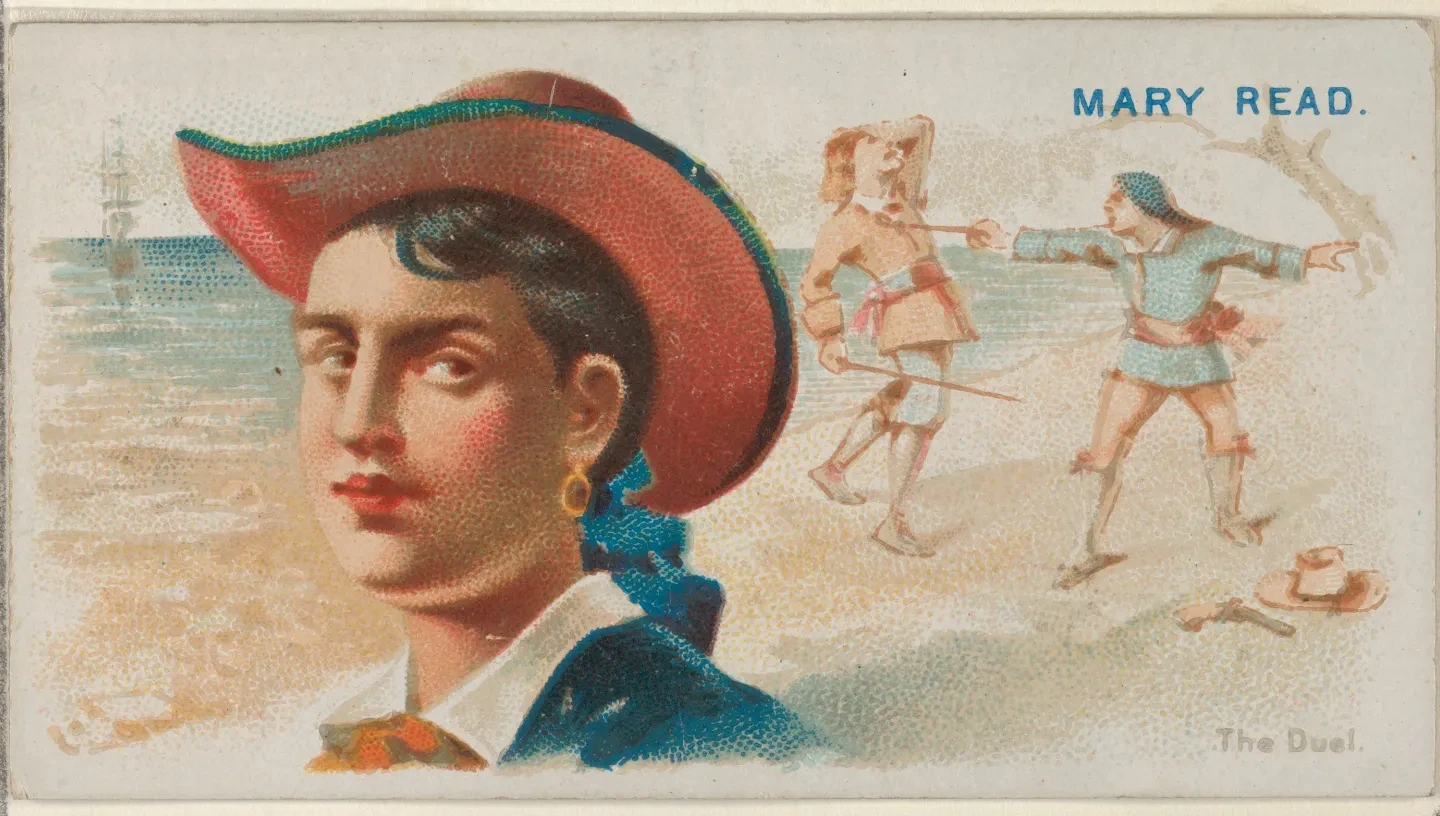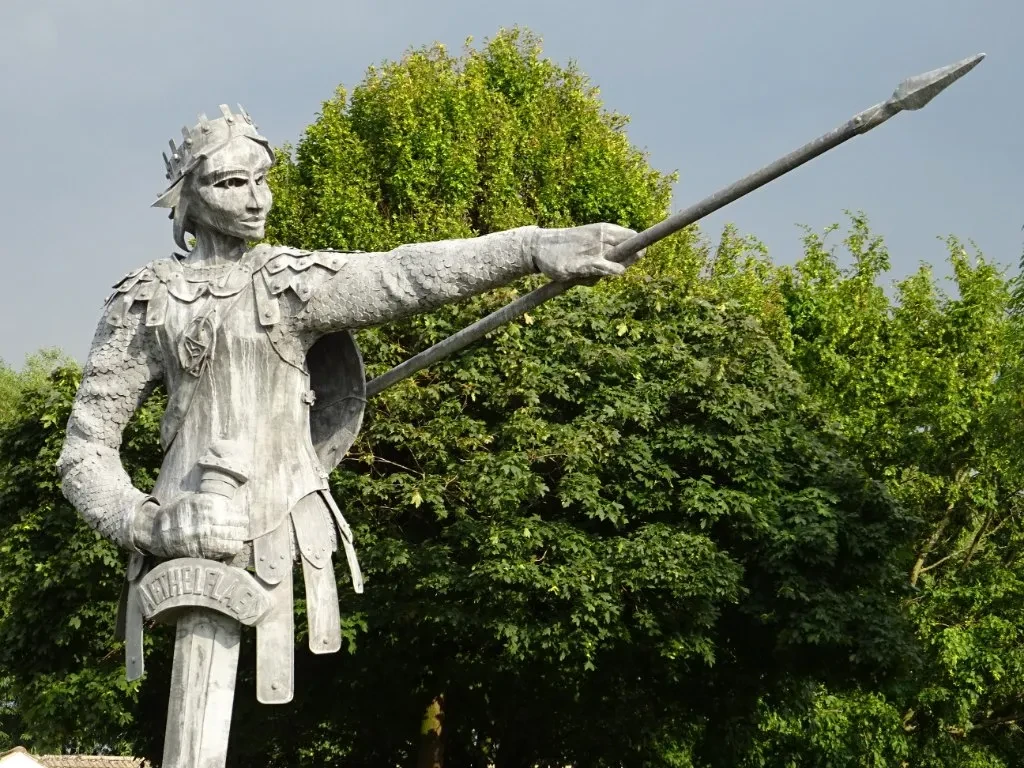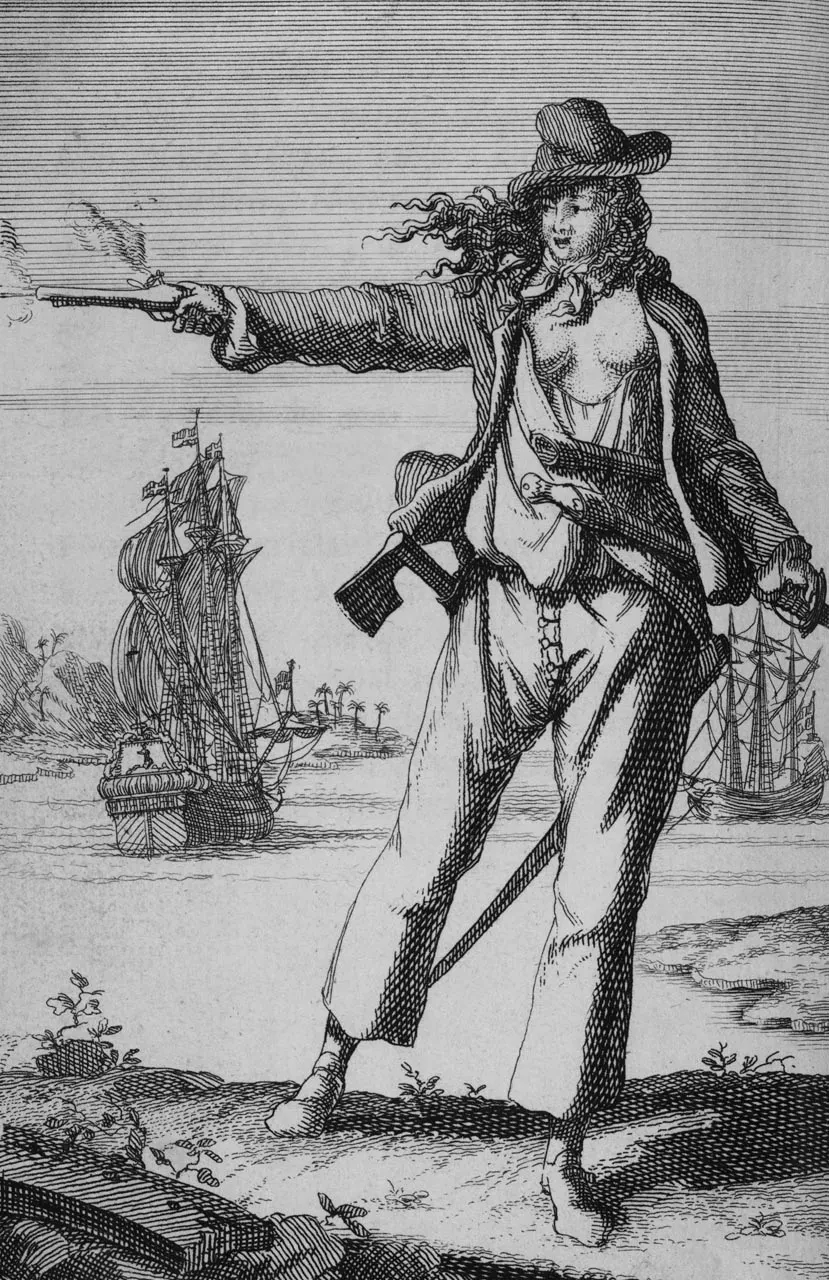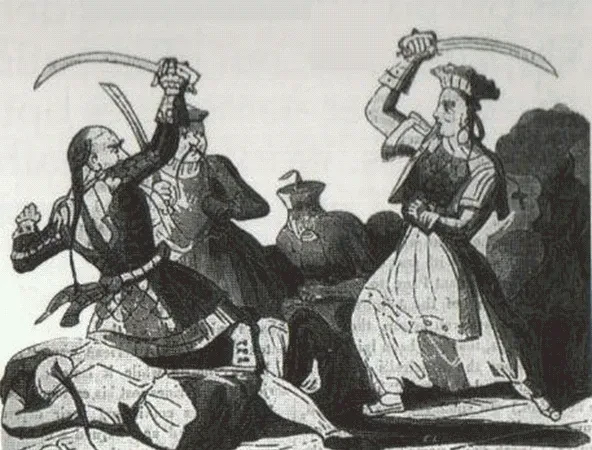
Throughout history, there have been dramatic tales of women sailing the oceans. Many of these stories begin from the Golden Age of Piracy (1650 to 1720), but there are accounts of female pirates dating back thousands of years. In this article, we'll explore the lives of some of the notable pirates prowling our oceans.
Were women allowed on board ships?
Historically, women were not allowed to remain on ships once they had set sail. Old-fashioned sailor superstitions thought that women on merchant and military vessels were bad luck and could spell disaster at sea.
Mariners believed the presence of women would anger the water gods, which might cause storms, violent waves and weather. Another assumption was that women would prove distracting amongst the male sailors during the long periods spent at sea and would be subject to harassment and even violence.
Seafaring professions were barred to women until the 20th Century. A woman could disguise herself as a man and assume a fake name, but her career would be over once discovered. The only way for most women to participate in the running of a merchant vessel before 1900 was through their relations or marriage.
It is only recently that women were allowed at sea within the British Royal Navy. In October 1990, during the Gulf War, the HMS Brilliant carried the first women officially to serve on a functioning warship. In 1998, Commander Samantha Moore became one of the first female officers to command a Royal Navy warship, HMS Dasher.
Were women allowed to be pirates?
The superstitions and customs that existed for military and commercial vessels also held for pirates. Historically, women who remained on ships at sea would have to do so illicitly and in disguise.
They would also need to learn the vital skills necessary for a seafaring life prior to setting sail. Without this education, it would have proved very challenging to be a female sailor, let alone a pirate.
As engaging in piracy is a criminal act, becoming a pirate would mean dealing with the possibility of arrest and even death. It was a decision people did not make lightly. While historically, pirates are often portrayed as swashbuckling heroes or villains, many were ordinary people - men and women forced into piracy to survive difficult times.
10 female pirates you should know
Queen Teuta of Illyria
Teuta (fl. third century BC) was a queen regent of the Ardiaei, a group of Illyrian tribes (based in modern-day Albania, Montenegro, and Bosnia). After the death of her husband, King Agron of the Ardiaei, Teuta ruled in his stead. She was known for supporting the plunder and raids of her subjects on Roman and Greek ships and coastal settlements.
When asked to cease her hostile activities by two Roman ambassadors, Teuta is said to have replied:
"It was never the custom of royalty to prevent the advantage of its subjects they could get from the sea."
The two envoys were later imprisoned and executed. Rome declared war on the Ardiaei in 229 BC, which ended in her surrender two years later. Rome allowed her to continue ruling but announced that no warship should sail under her command.
Aethelflaed
Aethelflaed (c. 870 – 12 June 918) was known as "the Lady of the Mercians" and was the first woman to rule an Anglo-Saxon kingdom. Appearing in the Anglo-Saxon Chronicle, she became the military leader and chief strategist of the Anglo-Saxons after her husband's death in battle with the Vikings in 911. She is recognised as playing a vital role in defeating the Viking raiders and reconquering English lands lost to Danish pirates.
Ladgerda
Ladgerda (also spelt Lagertha) was a Danish Viking pirate, said to have lived in the 9th Century AD.
She was known as a shieldmaiden: a Viking woman who carried a sword and shield, known for their ferocity and skills in battle on land and sea.
With only a few accounts of her life known to exist (most of what we know about her is recorded in Saxo Grammaticus' 13th-century work Gesta Danorum), there is controversy amongst historians as to whether Ladgerda is, in fact, a legendary figure and a substitute for the actions of a group of women.
One story suggests that she rescued her husband's fleet from a warring tribe, but on saving him, murdered him with a concealed knife and took his place as the leader of the tribe.
Jeanne de Clisson
de Clisson (1300–1359) was a Breton noblewoman who raided ships for the French and later the English during the Hundred Years' War.
After her husband was tried and executed for treason (a verdict de Clisson thought was false), she switched sides and fought with the English, raiding French castles, as well as merchant and military vessels.
Legend has it that de Clisson was given three warships, which she painted black and named her flagship, "My Revenge". de Clisson spent thirteen years plundering French vessels and was thought to be quite brutal, leaving few sailors alive. For this, she earned the moniker "The Lioness of Brittany."
Sayyida al-Hurra
Sayyida al-Hurra (1485 – 14 July 1561), whose name translates as "Lady who is free and independent", was a queen of Tétouan (an area of Northern Morocco) from 1515–1542 and known for her pirate activities against the rapidly growing empires of Spain and Portugal.
Working alongside Oruç Reis, the governor of Algiers and a known pirate, al-Hurra dominated the Mediterranean sea while Reis controlled the Eastern. She later also married King Ahmed al-Wattasi of Morocco, but was deposed in 1542 by her son-in-law. She lived the remainder of her life in exile.
Lady Mary Killigrew
Another fearsome pirate of the Elizabethan era, Mary Wolverston, or Lady Killigrew (before 1525 – after 1587), was known for her pirate activities along the Cornish coast. Mary was the daughter of a Lord Phillip Wolverton, a former pirate. She later married Sir Henry Killigrew, a pirate who was later made a Vice-Admiral by Queen Elizabeth I.
While Henry was employed to uphold maritime law, some ex-pirates were engaged as "privateers," sailing under the favour of the crown to amass illicit profits for England. Mary was known to be a champion of her husband's criminal activities. She redesigned their home at Arwenak castle to hide stolen goods, cut deals with smugglers, and raided ships.
It is thought that the Queen turned a blind eye to this and even pardoned her in later life.
Grace O’Malley
Grace O'Malley (a. 1530 - 1603) was a formidable Irish pirate and a decisive leader who successfully defended her lands against both English governance and other hostile Irish clans. O'Malley was the daughter of a chieftain and was educated in seafaring by her father. Upon his death, she took to the seas (even giving birth to her first child while aboard a vessel).
As the English began occupying Ireland, O'Malley fortified important coastal defences and offered her support to Irish rebels. She even met with Queen Elizabeth I in September 1594 at Greenwich Castle, where they created a treaty in Latin.
Mary Read & Anne Bonny
Mary Read (1685 – 28 April 1721) was an English pirate who, along with her crewmate Anne Bonny, became a legendary female pirate.
Mary's mother was a widow who dressed her as a boy to collect money from the family of her dead husband. She eventually joined the British Army disguised as a boy. She married a Flemish soldier who knew of her disguise, but when he died, Mary found herself penniless. When aboard a ship heading to the West Indies, they were attacked by pirates. On proving her skills, she joined them.
Eventually, Mary found herself aboard the ship of the infamous pirate, Calico Jack Rackham, alongside Anne Bonny. According to the legend, Mary became the lover of both Rackham and Bonny. When the three were captured in 1720, Mary and Anne were able to delay their hanging because both were pregnant. However, Mary fell ill in prison, and she died in 1721.
Jacquotte Delahaye
It is thought Delahaye was born around 1630 in Haiti, though there is no evidence to her birth, and many of the stories seem to originate from 1940s writer, Léon Treich. Legend has it that the British navy killed her father, and her mother died during childbirth. As she was destitute, she joined up with a pirate crew and later commanded a fleet of ships.
With striking red hair and the legendary status of surviving many dangerous encounters, she was given the nickname "Back From The Dead Red."
Ching Shih
Ching Shih (1775–1844) is known as one of the most successful pirates in history. Beginning life in a Cantonese brothel in the Chinese Empire, Shih later married Zheng Yi, commander of "The Red Fleet," a fleet of pirate vessels that sailed under a red flag.
After the death of her husband, Shih came to amass and rule over history's largest pirate fleet. Her 1200-strong armada (with a whole crew of over 70,000 men) dominated the South China Sea, battling domestic and foreign empires (China, Portugal and England) to retain control.
Shih is also known for her strict policies and harsh punishments for disobeying orders - from beheadings to cutting off ears. For crimes of rape or unsolicited lootings (something often associated with pirates), the sentence was also death.
Seemingly unstoppable, Ching Shih was granted a pardon in later life by the Chinese Emperor, retaining her wealth and opening a profitable gambling den.
Read about more famous pirates
What did pirate women wear?
Piracy has existed since humanity took to the sea, so it's likely women dressed either as women or as sailors in the styles and conventions of their own time. Many of the depictions of both male and female pirates we see today are glamorised accounts of the 17th Century's golden age of piracy.
The rise of pulp fiction in the 1800s had a dramatic effect on our understanding of pirate costume.
One example is the Penny Dreadful, a popular literary series of the 1860s, both in the United States and the British Empire. These cheap books told sensational stories of adventure and featured pirates and highwaymen, which are likely a primary source for many tales and imagery of female pirates today.
Women that became sailors often had to disguise their identity and conceal their gender by dressing the same as men. However, the reports of Grace O'Malley, Mary Read and Anne Bonny show that these pirates did not hide their gender and wore what they liked. Often this would depend on what they were doing. In the pamphlet The Tryals of Captain John Rackam and other Pirates, published in 1721, witnesses suggest:
"When they saw any Vessel, gave Chase, or Attacked, they wore Men's Cloaths; and, at other Times, they wore Women's Cloaths."
Main image: Mary Read, The Duel, from the Pirates of the Spanish Main series for Allen & Ginter Cigarettes





